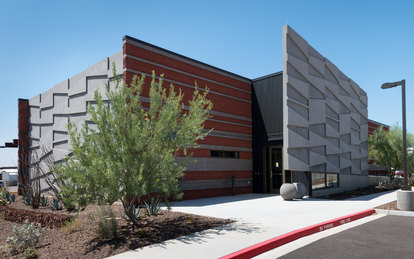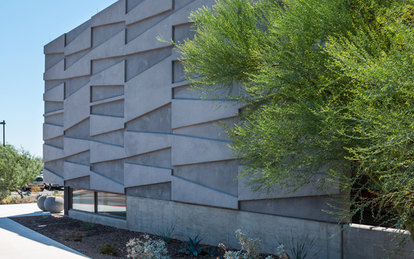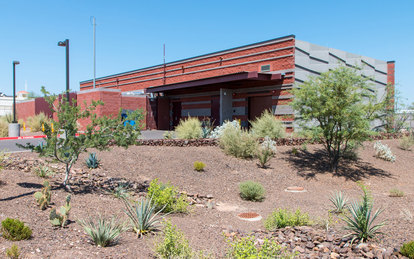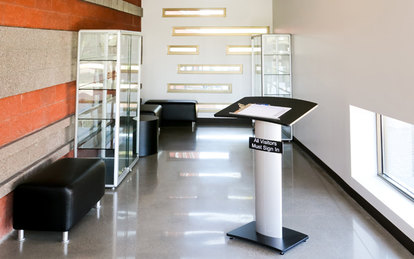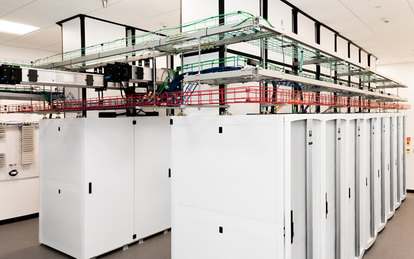Salt River Pima-Maricopa Indian Community - Data Center
Along with the customary role of a data center to preserve informational assets, the Pima-Maricopa Indian Community also uses its data center to preserve cultural assets, in a building that respects and reflects the cultural identity of this sovereign tribe.
Client
Salt River Pima-Maricopa Indian Community
Location
Scottsdale, Arizona
Markets/Services
Architecture, Civic, Data Centers, MEP Engineering, Mission Critical, Science & Technology
Size
5,500 SF
The Salt River Pima-Maricopa Indian Community, comprising Native American tribes of the Phoenix valley, needed a safe and secure repository to store digital content of cultural value. The modern concept of data storage generally comprises financial or technical data, however the community sought a repository for audio and video recordings of tribal traditions for historical preservation and future education.
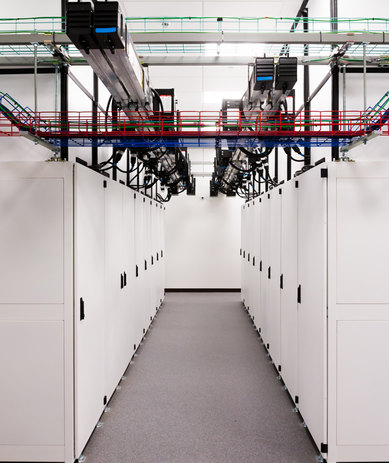
The single-story masonry and concrete building provides 2,500 square feet of reliable, redundant data storage in a 6,900 square-foot facility and adjacent 2,500-square-foot electrical/mechanical yard.
To reflect this legacy role, the team merged the components of a conventional enterprise data repository with elements of a cultural facility responsive to the community’s heritage.
Because it will occasionally host members of the community, the data center includes a welcoming lobby and meeting space. The exterior exhibits the importance of the Pima-Maricopa community government campus and the greater campus master plan. Notably, it retains views to the east and north of Red Mountain, a landmark of cultural significance.
The data center’s exterior also expresses the tribal aesthetic with subtle and appropriate treatments. A basket-weave pattern on the masonry walls provides texture to a building that desires few windows. Screen walls and gates are evocative of the ocotillo, a native plant that, like the Pima-Maricopa people, flourishes in Arizona’s desert environment.
Indigenous data is a collection, much like the historical physical artifacts of the tribes. With this framework for storage of digital assets, the learned structure of the community can be preserved for generations to come.
